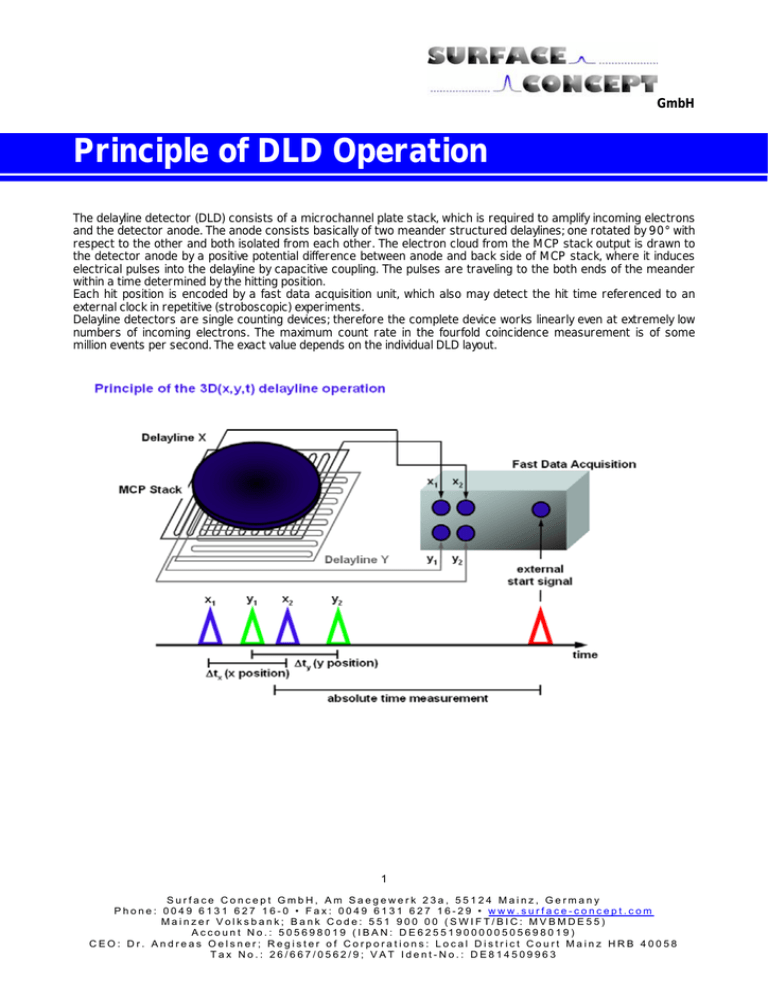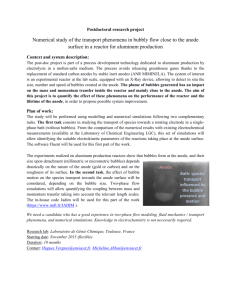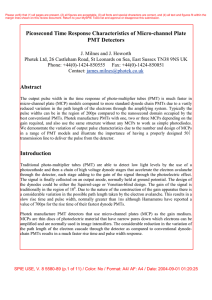Principle of DLD Operation
advertisement

GmbH Principle of DLD Operation The delayline detector (DLD) consists of a microchannel plate stack, which is required to amplify incoming electrons and the detector anode. The anode consists basically of two meander structured delaylines; one rotated by 90° with respect to the other and both isolated from each other. The electron cloud from the MCP stack output is drawn to the detector anode by a positive potential difference between anode and back side of MCP stack, where it induces electrical pulses into the delayline by capacitive coupling. The pulses are traveling to the both ends of the meander within a time determined by the hitting position. Each hit position is encoded by a fast data acquisition unit, which also may detect the hit time referenced to an external clock in repetitive (stroboscopic) experiments. Delayline detectors are single counting devices; therefore the complete device works linearly even at extremely low numbers of incoming electrons. The maximum count rate in the fourfold coincidence measurement is of some million events per second. The exact value depends on the individual DLD layout. 1 Surface Concept GmbH, Am Saegewerk 23a, 55124 Mainz, Germany Phone: 0049 6131 627 16-0 • Fax: 0049 6131 627 16-29 • www.surface-concept.com Mainzer Volksbank; Bank Code: 551 900 00 (SWIFT/BIC: MVBMDE55) Account No.: 505698019 (IBAN: DE62551900000505698019) CEO: Dr. Andreas Oelsner; Register of Corporations: Local District Court Mainz HRB 40058 Tax No.: 26/667/0562/9; VAT Ident-No.: DE814509963





